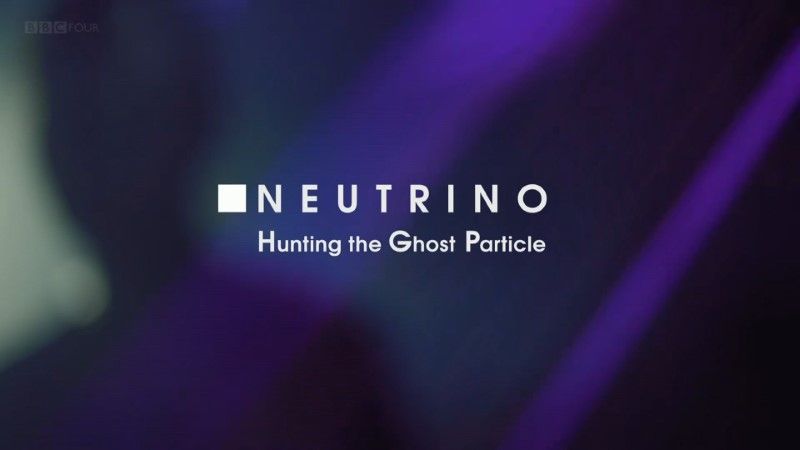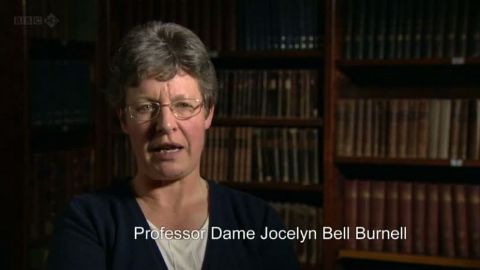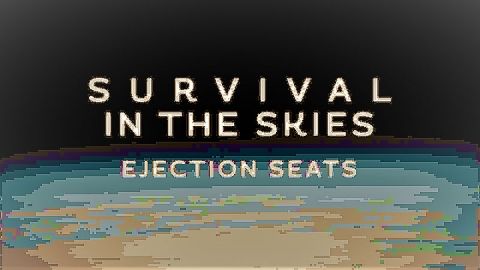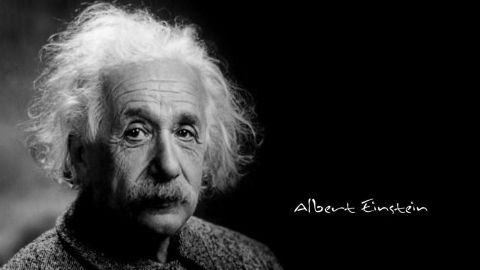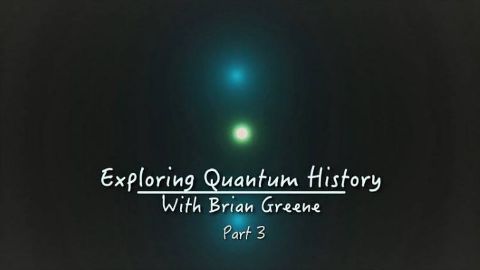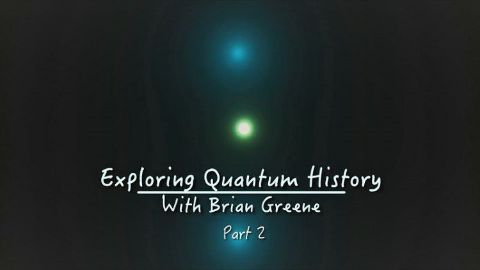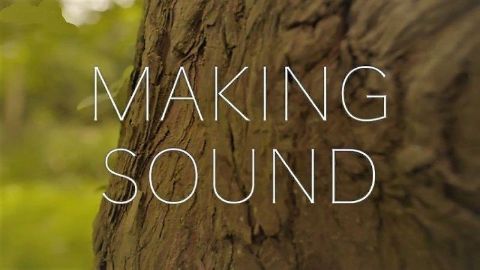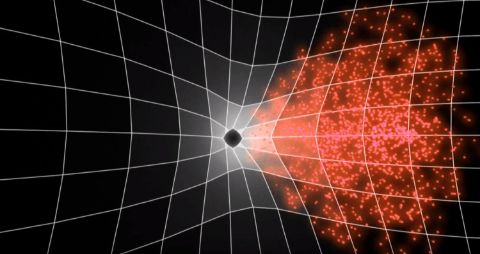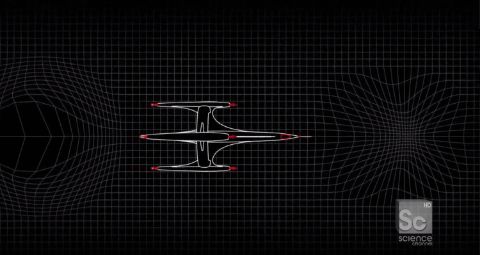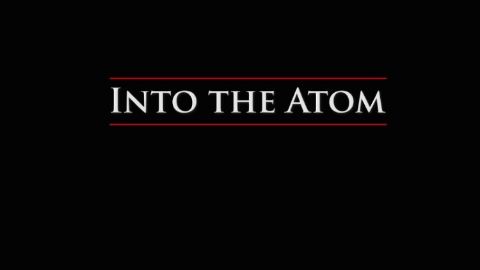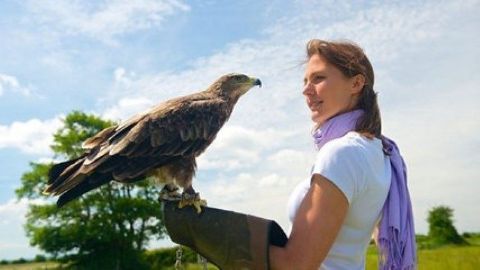PHYSICS • 95 videos
A unique and captivating documentary on the story of humanity's quest to measure time. Who invented time, who invented the clock? Why 1 hour, why 60 minutes, why 60 seconds? Since prehistoric times, man has sought to measure time, to organize social and religious life, to plan food supply... Today we can surf the Internet, geolocate, pay by credit card ... All our daily lives depend on time and the synchronization of clocks. The history of the invention of time and of the ways and instruments to measure it is a long story... Controlling Time, one of Humanity's biggest obsessions. First, man began to calculate the observable phenomena of time using incredible astronomical measuring instruments. Calendars were born. Then, he sought to quantify ever more precise durations, with ever more sophisticated machines, in order to establish a social, conventional time, the same for all. Today, this time, inscribed on our smartphones, is established by atomic clocks which have become the keystone of our digital world. Not without enormous industrial and economic challenges at stake. Through what major technological breakthroughs have we succeeded in controlling time, to the point of being able to make its ultra-precise factory the foundation of our interconnected society? From France to Greece, through Italy, England, and Switzerland, a group of experts —astrophysicists, engineers and historians — follows in the footsteps of genius inventors who forged our perception of time and our relationship to the world. For better and for worse. This film delves into the invention of time & ways to measure it. Don't waste time and be sure to make time to watch this fascinating film!
2021 • Physics
We've always structured our lives based on an unchanging past and a predictable and ordered future. But atomic and cosmic discoveries have changed all that. What is time itself? And will it ever end?
We hold a unique knowledge of time, realising that it stretches deep into the past, and will continue into the future. How does this affect our sense of who we are?
Outnumbering atoms a billion to one, neutrinos are the universe's most common yet most elusive and baffling particle. NOVA joins an international team of neutrino hunters whose discoveries may change our understanding of how the universe works.
This is an astonishing tale of perseverance and ingenuity that reveals how scientists have battled against the odds for almost a century to detect and decode the neutrino, the smallest and strangest particle of matter in the universe. Inside the world-renowned physics laboratory Fermilab, a team of scientists are constructing an audacious experiment to hunt for a mysterious new 'ghost' neutrino. If they find it, this could transform our understanding of the nature and fabric of our universe. The problem is, these tiny particles are almost impossible to detect. Elsewhere, physicists conduct experiments in some of the most extreme environments on the planet: from deep mine shafts in South Dakota to vast ice fields at the South Pole. In these unlikely places supersized neutrino detectors hope to unlock the universe's deepest secrets. Could neutrinos overturn the most precise theory of particle physics that humans have ever written down? Could they even be a link to a hidden realm of new particles that permeate the cosmos - so called dark matter? Scientists at Fermilab are edging towards the truth.
2021 • Physics
Just outside Paris, inside a hi-tech vault, and encased in three vacuum-sealed bell jars, rests a small metallic cylinder about the diameter of a golf ball. It may not look like much, but it is one of the most important objects on the planet. It affects nearly every aspect of our lives including the food we eat, the cars we drive, even the medicines we take. It is the kilogramme, the base unit of mass in the International System of Units. This small hunk of metal is the object against which all others are measured. Yet over time, its mass has mysteriously eroded by the weight of an eyelash. A change that, unbeknownst to most, unleashed a crisis with potentially dire consequences. Follows the ensuing high-stakes, two-year race to redefine the weight of the world, and tells the story of one of the most important objects on the planet.
2021 • Physics
Follow scientists on their quest to understand and capture the first image of a black hole while exploring the limits of our knowledge of the universe.
2021 • Physics
Professor Dame Jocelyn Bell Burnell describes how she discovered pulsars, the by-products of supernova explosions which make life in the universe possible. She describes the moments of despair and jubilation as the discovery unfolded and her excitement as pulsars took the scientific world by storm. Reflecting on the nature of scientific discovery, she talks about the connections between religion and science and how she sees science as a search for understanding rather than as a quest for truth.
S1E1 • Beautiful Minds • 2010 • Physics
Albert Einstein and Stephen Hawking were revolutionary thinkers who changed everything we know about our universe, and using the latest discoveries, experts explore the connections between these two great minds.
2019 • Physics
The idea that there is a possibility of many worlds or multi universal theory is very new even though you may have learned about it in movies and comic books. Explore how this thinking was developed in the world of quantum mechanics and philosophy.
2019 • Physics
From the first gas turbine to tomorrow's hypersonic jet engines, see the evolution of the machine that is changing the world.
S1E4 • Survival in the Skies • 2019 • Physics
Witness the ingenuity and bravery of the pioneers who developed, built, and even risked their lives testing the ejection seat.
S1E3 • Survival in the Skies • 2019 • Physics
Meet the innovators who developed newer, safer ways to fall from the sky and those whose lives were saved by them
S1E2 • Survival in the Skies • 2019 • Physics
Track the evolution of the space suit, from the first pressure suit of the 1930s to outfits that will take man to Mars.
S1E1 • Survival in the Skies • 2019 • Physics
Take a theatrical journey with physicist Brian Greene to uncover how Albert Einstein developed his theory of relativity. In this vivid play, science is illuminated on stage and screen through innovative projections and an original score.
2019 • Physics
Carol Vorderman's passions are flying and engineering. She gets hands-on experience with the Airbus workforce at Broughton, Flintshire, where they are building the wings for their latest, greenest, most advanced aircraft - the A350.
2015 • Physics
Planet Earth shrinks to half size causing altitude sickness and a cosmic disaster, the sun gets as small as a sun can be, turning Earth into a frozen mud ball. We also see what happens to a man who shrinks to the same size as a wasp.
S1E2 • Size Matters • 2019 • Physics
Planet Earth grows to outlandish proportions that causes lying down to become the new standing up, the sun gets big ideas giving us a 20,000-year winter before blowing up in the biggest explosion since the big bang, we meet a dog the size of a dinosaur and Joe himself turns into a 49ft giant.
S1E1 • Size Matters • 2019 • Physics
Join scientists as they grab light from across the universe to prove quantum entanglement is real. Einstein called it "spooky action at a distance", but today quantum entanglement is poised to revolutionize technology from computers to cryptography. Physicists have gradually become convinced that the phenomenon two subatomic particles that mirror changes in each other instantaneously over any distance is real. But a few doubts remain. NOVA follows a ground-breaking experiment in the Canary Islands to use quasars at opposite ends of the universe to once and for all settle remaining questions.
Ice is one of the strangest, most beguiling and mesmerising substances in the world. Full of contradictions, it is transparent, yet it can glow with colour, it is powerful enough to shatter rock, but it can melt in the blink of an eye. It takes many shapes, from the fleeting beauty of a snowflake to the multimillion-tonne vastness of a glacier and the eeriness of the ice fountains of far-flung moons. Science writer Dr Gabrielle Walker has been obsessed with ice ever since she first set foot on Arctic sea ice. In this programme, she searches out some of the secrets hidden deep within the ice crystal to try to discover how something so ephemeral has the power to sculpt landscapes, to preserve our past and inform our future.
2011 • Physics
Where Am I? Is a new documentary about the skills we use to find our way around. Whether you are an Inuit hunter, a foraging insect, or just someone out for a stroll, your brain is performing one of its most fundamental services – it’s navigating. Why are some of us good at finding our way, while others are not? Good navigators are able to use both memory and imagination…remembering where they have been, and imagining where they’re going. Some researchers believe we build a cognitive or mental map when we navigate, a kind of bird’s eye view of our surroundings, a view that can be rotated and examined in our mind. There has been about sixty years of argument amongst scientists about whether humans and other mammals actually form these cognitive maps or not. The advent of GPS or Global Positioning Systems has changed the discussion about navigation. GPS triggers a simpler, more automatic navigational technique that does not involve building a mental map. With GPS, we simply respond to directions and may not truly understand where we are.
S53E09 • The Nature of Things • 2013 • Physics
A scientific film essay, narrated by Phil Morrison. A set of pictures of two picnickers in a park, with the area of each frame one-tenth the size of the one before. Starting from a view of the entire known universe, the camera gradually zooms in until we are viewing the subatomic particles on a man's hand.
1977 • Physics
Zach charts a journey to determine whether time travel is possible. He meets a man who claims to have traveled back in time due to a secret government program and a group of people living in Liverpool known as “time slippers.” Zach then makes an visit to the CERN headquarters in Geneva, where he attempts to understand the origins of the universe and the dimension of time. Equipped with this new knowledge, Zach tests his own perception of time with an elaborate skydiving experiment to see if he can slow down time itself.
2018 • Physics
Hannah is going the other way by asking whether everything could, in fact, be smaller. But going smaller turns out not to be much safer... First, we shrink the Earth to half its size - it starts well with lower gravity enabling us to do incredible acrobatics, but things gradually turn nasty as everyone gets altitude sickness - even at sea level. Then we visit Professor Daniel Lathrop's incredible laboratory, where he has built a model Earth that allows us to investigate the other effects of shrinking the planet to half size. The results aren't good - with a weaker magnetic field we would lose our atmosphere and eventually become a barren, lifeless rock like Mars. In our next thought experiment, we shrink people to find out what life is like if you are just 5mm tall. We find out why small creatures have superpowers that seem to defy the laws of physics, meet Jyoti Amge, the world's smallest woman, and with the help of Dr Diana Van Heemst and thousands of baseball players reveal why short people have longer lives. Lastly, the Sun gets as small as a sun can be. We visit the fusion reactor at the Joint European Torus to find out why stars have to be a minimum size or fusion won't happen. And if our Sun were that small? Plants would turn from green to black, and Earth would probably resemble a giant, frozen eyeball. Which all goes to show that size really does matter.
S1E2 • Size Matters with Hannah Fry • 2018 • Physics
Hannah starts her journey by asking whether everything could be bigger, finding out what life would be like on a bigger planet. As the Earth grows to outlandish proportions, gravity is the biggest challenge, and lying down becomes the new standing up. Flying in a Typhoon fighter jet with RAF flight lieutenant Mark Long, the programme discovers how higher G-force affects the human body, and how people could adapt to a high G-force world. But by the time Earth gets to the size of Jupiter, it's all over, as the moon would impact the planet and end life as we know it. Next, Hannah tries to make living things bigger. The programme examines the gigantopithecus, the biggest ape to ever exist, creates a dog the size of a dinosaur and meets Sultan Kosen, the world's tallest man. Humans are then super-sized with the help of Professor Dean Falk to see what a human body would look like if we were 15m tall. The sun gets expanded, and Professor Volker Bromm looks back in time to find the largest stars that ever existed, before the sun explodes in perhaps the biggest explosion since the big bang.
S1E1 • Size Matters with Hannah Fry • 2018 • Physics
They've captured our imagination and are a source of childlike wonder, but what exactly are rainbows? Learn the science behind these weather phenomenon and how one day they might help pinpoint habitable planets in deep space.
2018 • Physics
Time travel is not forbidden by the laws of nature, but to build a time machine, we would need to understand more about those laws and how to subvert them than we do now. And every day, science does learn more. In this film Horizon meets the scientists working on the cutting edge of discovery - men and women who may discover how to build wormholes, manipulate entangled photons or build fully functioning time crystals. In short, these scientists may enable an engineer of the future to do what we have so far been only able to imagine - to build a machine that allows us travel back and forward in time at the touch of a button. It could be you! Science fiction?
Richard Feynman was one of the most brilliant theoretical physicists and original thinkers of the 20th century. He rebuilt the theory of quantum electrodynamics, and it was for this work that he won the Nobel Prize in 1965. In 1981, he gave Horizon a candid interview, talking about many things close to his heart.
Scientists investigate the way the Sun builds its power -- through fusion -- hoping to find a way to use fusion as a less dangerous and less radioactive waste-producing path to energy than fission. But there are some major difficulties along the way...
2017 • Physics
Over 100 years ago, Albert Einstein grappled with the implications of his revolutionary special theory of relativity and came to a startling conclusion: mass and energy are one, related by the formula E = mc2. In "Einstein's Big Idea," NOVA dramatizes the remarkable story behind this equation. E = mc2 was just one of several extraordinary breakthroughs that Einstein made in 1905, including the completion of his special theory of relativity, his identification of proof that atoms exist, and his explanation of the nature of light, which would win him the Nobel Prize in Physics. Among Einstein's ideas, E = mc2 is by far the most famous. Yet how many people know what it really means? In a thought-provoking and engrossing docudrama, NOVA illuminates this deceptively simple formula by unraveling the story of how it came to be.
Documentary which follows six brilliant scientists during the launch of the Large Hadron Collider, marking the start of the biggest and most expensive experiment in the history of the planet. Filmed over seven years, it is an emotionally charged journey with scientists attempting to push the edge of human innovation. For the first time, a documentary gives viewers a front row seat to a significant and inspiring scientific breakthrough as it happens. As they seek to unravel the mysteries of the universe, 10,000 scientists from over 100 countries join forces in pursuit of a single goal - to recreate conditions that existed just moments after the big bang and find the Higgs boson, potentially explaining the origin of all matter. Directed by a physicist-turned-filmmaker and masterfully edited by Walter Murch (The Godfather trilogy), Particle Fever is a celebration of discovery, revealing the human stories behind this epic machine.
2014 • Physics
Materials Science is set to define the next century of human history, and it promises to revolutionize every aspect of our lives. This film takes us on a journey where we meet the pioneers of Materials Science and see the extraordinary discoveries that are transforming the world around us.
2015 • Physics
Award-winning physicist Sean Carroll is known for his keen observations on the relationship between humanity and the laws of nature, and finding where human purpose and meaning fit into a scientific world view.
S1E8 • Curiosity Retreats: 2016 Lectures • 2016 • Physics
What does quantum mechanics tell us about our world -- or are there many worlds due to probability waves? How does the general theory of relativity mesh with quantum mechanics? If you've wished you understood quantum mechanics (or at least grasped the basics) physicist Brian Greene can help!
S1E1 • Curiosity Retreats: 2015 Lectures • 2015 • Physics
The human race has succeeded in explaining nearly everything in this universe using mathematical formulae. Yet there is one place that remains shrouded in mystery -– black holes. Physicists believe that if they could discover a formula that explains the center of black holes, the last remaining mystery of the universe could finally be unraveled -– how the universe came into being. Their attempts have been mired by unforeseen pitfalls but with the development of superstring theory, physicists have arrived at a formula that could finally end their century-long search. What the formula described was a world beyond our wildest imaginations. This is the incredible story of physicists like Einstein, Hawking and the superstring theorists who have endeavored to solve the mystery of the origin of the universe.
S1E2 • The Ultimate Formula • 2016 • Physics
For over a century, physicists have searched for a blueprint of the universe in the form of a single mathematical formula. This ultimate formula would explain the fundamental building blocks of the universe -– the elementary particles and the different forces that govern them. In their quest, physicists dedicated themselves to the pursuit of mathematical beauty but they were to be met with unexpected setbacks. The discovery of the Higgs boson in 2012 at last confirmed the Standard Model –- a culmination of the theories of various physicists that finally seemed to explain what this universe is made of. But is this where the story ends...? Using the latest computer graphics and interviews with Nobel Prize-winning physicists, we look at the fascinating and dramatic story of the search for the ultimate formula.
S1E1 • The Ultimate Formula • 2016 • Physics
The quantum mechanics revolution has revolutionized modern technology. Renowned physicist Brian Greene takes us on a journey through the modern electronic age, from transistors to fiber optics, all made possible through quantum mechanics.
S1E3 • Exploring Quantum History with Brian Greene • 2016 • Physics
As the theories on quantum mechanics begin to take shape, the 1927 Solvay Conference becomes a battleground for new scientific ideas. The world’s most brilliant minds, including Einstein and Bohr, try to crack the nature of the subatomic world. Join Brian Greene in exploring this fascinating period.
S1E2 • Exploring Quantum History with Brian Greene • 2016 • Physics
Theoretical physicist and best-selling author Brian Greene takes us on a journey through the discoveries of quantum physics. How is it that Newtonian mechanics gave way to the more complex and modern world of quantum mechanics?
S1E1 • Exploring Quantum History with Brian Greene • 2016 • Physics
Jim Al-Khalili investigates the amazing science of gravity, recreating groundbreaking experiments, including the moment when Galileo first worked out how to measure it. He investigates gravity waves, finds out from astronauts what it's like to live without gravity, sets out to find where in Britain gravity is weakest and so where we weigh the least, and helps design a smartphone app that volunteers use to demonstrate how gravity affects time and makes us age at slightly different rates.
2017 • Physics
Visiting a hidden location buried beneath the hills of Scotland, Helen experiences some of the most extreme acoustics in the world. Here she learns just how much information can be carried by sound. She discovers how sound has driven the evolution of truly incredible biological systems and complex relationships between creatures that exploit sound for hunting - and escaping from predators. Helen demonstrates how sound waves diffract (bend around objects) and in doing so help us sense danger and locate it. Helen explains how we are not limited to passively detecting sound waves; we can also use them to actively probe the world.
S1E2 • Sound Waves: The Symphony of Physics • 2017 • Physics
At the Palace of Westminster, Helen teams up with scientists from the University of Leicester to carry out state-of-the-art measurements using lasers to reveal how the most famous bell in the world - Big Ben - vibrates to create pressure waves in the air at particular frequencies. This is how Big Ben produces its distinct sound. It's the first time that these laser measurements have been done on Big Ben. At the summit of Stromboli, one of Europe's most active volcanoes, Helen and volcanologist Dr Jeffrey Johnson use a special microphone to record the extraordinary deep tone produced by the volcano as it explodes. Finally, at the University of Cambridge's Institute of Astronomy, Helen meets a scientist who has discovered evidence of sound waves in space, created by a giant black hole. These sounds are one million billion times lower than the limit of human hearing
S1E1 • Sound Waves: The Symphony of Physics • 2017 • Physics
A sword made of pure light that can cut through anything, the lightsaber is a truly awesome weapon. But it's not just a science fiction fantasy, Dr Michio Kaku reveals how we could one day build a real working lightsaber.
S1E8 • Physics of the Impossible • 2009 • Physics
Hurtling back in time to visit the dinosaurs is not an impossible fantasy! Dr Michio Kaku draws up blueprints for a working time machine that will let us visit the past and travel back to the future.
S1E6 • Physics of the Impossible • 2009 • Physics
A gateway to a world of limitless possibilities. The parallel universes of science fiction turn out to be as real as they are fantastic. Dr Michio Kaku reveals how future civilizations could build a machine to reach one.
S1E2 • Physics of the Impossible • 2009 • Physics
Exploring the universe on a ship that can boldly go where no man has gone before isn't just a sci fi dream. Dr Michio Kaku reveals how we really could one day build a warp drive and set out on our own star trek.
S1E1 • Physics of the Impossible • 2009 • Physics
Meet Nikola Tesla, the genius engineer and tireless inventor whose technology revolutionized the electrical age of the 20th century. Although eclipsed in fame by Edison and Marconi, it was Tesla's vision that paved the way for today's wireless world. His fertile but undisciplined imagination was the source of his genius but also his downfall, as the image of Tesla as a "mad scientist" came to overshadow his reputation as a brilliant innovator.
American Experience • 2016 • Physics
This documentary presents the story of Nikola Tesla, the great scientist, visionary, and inventor who gave the world alternating current electricity, as well as being the father of radio. The film tells the story of this man's astonishing genius, his visions and inventions. Tesla's own scientific and autobiographical writings, as well as archival photographs and re-enactments are used to tell the story. A native of Austro-Hungary, Tesla came to America in 1884. Working first with Edison, the two inventors fell out over Edison's insistence on using direct current. Tesla took his alternating current vision to Westinghouse. His New York address was renowned for the bolts of lightning emanating from it, as Tesla worked to unlock the secrets of energy and electricity. His quest took him to Colorado. The film follows Tesla's exploits and eccentricities, which made him a darling of the press. Included is the well-known and touching story of his devotion to a certain white pigeon. Largely forgotten today in spite of the great debt the modern world owes him, the film pays tribute to this overlooked genius.
2007 • Physics
Caught up in the race to discover the atom’s internal parts — and learn how they fit together — a young British physicist, Harry Moseley, uses newly discovered X-rays to put the Periodic Table in a whole new light. And a young American chemist named Glenn Seaborg creates a new element — plutonium — that changes the world forever, unleashing a force of unimaginable destructive power: the atomic bomb.
Part 3 • The Mystery of Matter: Search for the Elements • 2015 • Physics
Over a single weekend in 1869, a young Russian chemistry professor named Dmitri Mendeleev invents the Periodic Table, bringing order to the growing gaggle of elements. But this sense of order is shattered when a Polish graduate student named Marie Sklodowska Curie discovers radioactivity, revealing that elements can change identities — and that atoms must have undiscovered parts inside them.
Part 2 • The Mystery of Matter: Search for the Elements • 2015 • Physics
One of science’s great odd couples — British minister Joseph Priestley and French tax administrator Antoine Lavoisier — together discover a fantastic new gas called oxygen, overturning the reigning theory of chemistry and triggering a worldwide search for new elements. Soon caught up in the hunt is science’s first great showman, a precocious British chemist named Humphry Davy, who dazzles London audiences with his lectures, introduces them to laughing gas and turns the battery into a powerful tool in the search for new elements.
Part 1 • The Mystery of Matter: Search for the Elements • 2015 • Physics
Artist and writer Matt Collings takes the plunge into an alien world of equations. He asks top scientists to help him understand five of the most famous equations in science, talks to Stephen Hawking about his equation for black holes and comes face to face with a particle of anti-matter. Along the way he discovers why Newton was right about those falling apples and how to make sense of E=mc2. As he gets to grips with these equations he wonders whether the concept of artistic beauty has any relevance to the world of physics.
2010 • Physics
Helen Czerski ventures beyond the visible spectrum in the final (and best) episode in this vibrant little series, showing how electromagnetic radiation is so much broader than the narrow slice of reality we see with our eyes. Before delving into the details of UV, infrared and x-rays, Dr Czerski explores colour subjectivity by trying on a dress that recently divided the internet — to some it appeared blue and black, to others white and gold. It's a perfect fit. It's also a neat analogy of how people can have opposing views but both swear blind that their perspective is correct. The series ends with some amazing imaging techniques that show our bodies in a whole new light.
S1E3 • Colour: The Spectrum of Science • 2015 • Physics
Early Earth was a canvas for the vast new palette of the colours of life, with the diversity of human skin tones telling the story of how humanity spread and ultimately conquered the planet. Dr Helen Czerski explores the true masters of colour - which are often the smallest and most elusive - travelling to the mountains of Tennessee to witness the colourful mating display of fireflies, and revealing the marine creatures that can change the colour of their skin in order to hide from the world.
S1E2 • Colour: The Spectrum of Science • 2015 • Physics
In the first episode, Helen seeks out the colours that turned planet Earth multicoloured. To investigate the essence of sunlight Helen travels to California to visit the largest solar telescope in the world. She discovers how the most vivid blue is formed from sulfur atoms deep within the Earth's crust and why the presence of red ochre is a key sign of life. In gold, she discovers why this most precious of metals shouldn't even exist on the surface of the planet and in white, Helen travels to one of the hottest places on Earth to explore the role salt and water played in shaping planet Earth.
S1E1 • Colour: The Spectrum of Science • 2015 • Physics
There is a strange and mysterious world that surrounds us, a world largely hidden from our senses. The quest to explain the true nature of reality is one of the great scientific detective stories.
See how uranium has shaped the past and will change the future.
S1E2 • Uranium – Twisting the Dragon’s Tail • 2015 • Physics
Follow Dr. Derek Muller as he explores the controversial element — uranium.
S1E1 • Uranium – Twisting the Dragon’s Tail • 2015 • Physics
Scientists genuinely don't know what most of our universe is made of. The atoms we're made from only make up four per cent. The rest is dark matter and dark energy (for 'dark', read 'don't know'). The Large Hadron Collider at CERN has been upgraded. When it's switched on in March 2015, its collisions will have twice the energy they did before. The hope is that scientists will discover the identity of dark matter in the debris. The stakes are high - because if dark matter fails to show itself, it might mean that physics itself needs a rethink.
How studying the atom forced us to rethink the nature of reality itself.
Jim Al-Khalili shows how investigation into the atom unravelled the mystery of creation.
The story of the groundbreaking scientific discovery that everything is made from atoms.
Light always travels at a speed of 299,792,458 meters per second. But if you're in motion too, you're going to perceive it as traveling even faster -- which isn't possible! In this second installment of a three-part series on space-time, CERN scientists Andrew Pontzen and Tom Whyntie use a space-time diagram to analyze the sometimes confounding motion of light.
Space is where things happen. Time is when things happen. And sometimes, in order to really look at the universe, you need to take those two concepts and mash them together. In this first lesson of a three-part series on space-time, hilarious hosts Andrew Pontzen and Tom Whyntie go through the basics of space and time individually, and use a flip book to illustrate how we can begin to look at them together.
S1E1 • The fundamentals of space-time • Physics
Particle physicist Dr Brian Cox wants to know why the Universe is built the way it is. He believes the answers lie in the force of gravity. But Newton thought gravity was powered by God, and even Einstein failed to completely solve it. Heading out with his film crew on a road trip across the USA, Brian fires lasers at the moon in Texas, goes mad in the desert in Arizona, encounters the bending of space and time at a maximum security military base, tries to detect ripples in our reality in the swamps of Louisiana and searches for hidden dimensions just outside Chicago.
How we finally came to understand the science of electricity.
How harnessing the link between magnetism and electricity transformed the world.
How pioneers unlocked electricity's mysteries and built strange instruments to create it.
It's called the speed limit of the universe. Einstein blew all of our minds when he worked out the Theory of Relativity, and showed that space and time were malleable substances. He also theorized that we as humans can never travel faster than the speed of light, which leaves the stars and other galaxies almost impossibly out of our reach. But the dreams of Star Wars and Star Trek are not dead. In fact, there could be ways to travel faster than the speed of light - and some of them are already being tested in labs around the world.
S2E08 • Through the Wormhole • Physics
It appears we live in a universe filled with light. But scientists are now certain there is far more matter in the dark portions of our universe.
S5E10 • Through the Wormhole • Physics
Physicist Jim Al-Khalili routinely deals with the strangest subject in all of science - quantum physics, the astonishing and perplexing theory of sub-atomic particles. But now he's turning his attention to the world of nature. Can quantum mechanics explain the greatest mysteries in biology?
S1E2 • The Secrets of Quantum Physics • Physics
How do we know what matter is made of? The quest for the atom has been a long one, beginning 2,400 years ago with the work of a Greek philosopher and later continued by a Quaker and a few Nobel Prize-winning scientists. Theresa Doud details the history of atomic theory.?
How Albert Einstein thought he'd found the fatal flaw in quantum theory because it implies that sub-atomic particles can communicate faster than light.
S1E1 • The Secrets of Quantum Physics • Physics
Horizon plunges down the biggest rabbit-hole in history in search of the smallest thing in the Universe. It is a journey where things don't just become smaller but also a whole lot weirder. Scientists hope to catch a glimpse of miniature black holes, multiple dimensions and even parallel Universes.
The classical physics that we encounter in our everyday, macroscopic world is very different from the quantum physics that governs systems on a much smaller scale (like atoms).
The double-slit experiment is a demonstration that light and matter can display characteristics of both classically defined waves and particles; moreover, it displays the fundamentally probabilistic nature of quantum mechanical phenomena.
The Heisenberg Uncertainty Principle states that you can never simultaneously know the exact position and the exact speed of an object.
When you think about Einstein and physics, E=mc^2 is probably the first thing that comes to mind. But one of his greatest contributions to the field actually came in the form of an odd philosophical footnote in a 1935 paper he co-wrote -- which ended up being wrong.
One of the most amazing facts in physics is that everything in the universe, from light to electrons to atoms, behaves like both a particle and a wave at the same time. But how did physicists arrive at this mind-boggling conclusion?
Austrian physicist Erwin Schrödinger, one of the founders of quantum mechanics, posed this famous question: If you put a cat in a sealed box with a device that has a 50% chance of killing the cat in the next hour, what will be the state of the cat when that time is up?
James May rapidly and easily explains all you need to know about speed.
S2E4 • James May's Things You Need to Know • 2012 • Physics
One of the most significant scientific discoveries of the early 21st century is surely the Higgs boson, but the boson and the Higgs Field that allows for that magic particle are extremely difficult to grasp. Don Lincoln outlines an analogy (originally conceived by David Miller) that all of us can appreciate, starring a large dinner party, a raucous group of physicists, and Peter Higgs himself.
This Quick Question explains the difference between gravity and g-force, and how you can experience zero-g in space even when it’s not zero gravity!
In two mind-blowing hours, Hawking reveals the wonders of the cosmos to a new generation.
S1E3 • Stephen Hawking's Universe • 1997 • Physics
What is Energy? The short answer is EVERYTHING. But what does that mean? Let SciShow explain.
Just how small are atoms? And what's inside them? The answers turn out to be astounding, even for those who think they know. This fast-paced animation uses spectacular metaphors (imagine a blueberry the size of a football stadium!) to give a visceral sense of the building blocks that make our world.
Adam Savage walks through two spectacular examples of profound scientific discoveries that came from simple, creative methods anyone could have followed -- Eratosthenes' calculation of the Earth's circumference around 200 BC and Hippolyte Fizeau's measurement of the speed of light in 1849.
2012 • Physics
When we look at the sky, we have a flat, two-dimensional view. So how do astronomers figure the distances of stars and galaxies from Earth? Yuan-Sen Ting shows us how trigonometric parallaxes, standard candles and more help us determine the distance of objects several billion light years away from Earth.
People ask Google everything under the sun. One of the most commonly searched questions in the world is “What Is Love?” Allow us at SciShow to explain.
2014 • Physics







